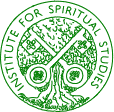
|
|
Two Anglican Church Parishes:
|
A seminar presented by Dr Colin Holden on June 24, 2008On June 24th the Revd Dr Colin Holden gave a lecture to the Institute for Spiritual Studies on the two Melbourne parishes of All Saints', East St Kilda and St Peter's, Eastern Hill, Melbourne. He drew attention in this historical overview to their contrasting developments, their age and social backgrounds, their leading role in the early twentieth century, their churchmanship, and their influential priests. Dr Holden noted that there were five different contrasts: the 'gathered' or 'local geography', social composition, musical traditions, churchmanship, and their relationships with the Melbourne diocese. 1. 'Eclectic or gathered' versus Geographical parishIt was remarked that communicant numbers increased rapidly at St Peter's, from twenty on Christmas Day 1893, to 500 by 1900. The old East Melbourne gentry had been replaced by nearby working class residents. The young curate, Fr Ernest Selwyn Hughes, attracted a wide range of people. By 1910 however, half of the St Peter's regulars came from some distance away. All Saints', on the other hand, went from having half its congregation from nearby St Kilda to having to search for more local people in the 1950s and 1960s. 2. Social compositionBetween 1850 and 1900 both parish churches had a strong local gentry clientele as regulars on their governing bodies. Till 1900, St Peter's contained those living 'down the hill' — doctors and lawyers. All Saints' was more of an upper middle class parish, including lawyers and pastoralists, with some even 'anti-democratic' in attitude. There were 'tidy class hierarchies' in St Kilda between 1850 and 1910. Meantime, Fr Hughes, as curate at St Peter's, tried to bring in working class Fitzroyites. Canon Farnham Maynard, his successor, had a socially mixed church, and Fr Gerard Kennedy Tucker began the Brotherhood of St Lawrence as an outgrowth of St Mary's Mission, Fitzroy. Whereas Maynard was a 'radical Christian socialist communist', Fr Blake at All Saints' was 'politically safe'. However, by the 1970s St Peter's had become more middle class. 3. Musical traditionsThe nineteenth century saw the rise of church music at the same time as the two parishes had middle class/gentry bases. St Peter's was the first Melbourne Anglican parish to have an all-male choir, which was surpliced in 1865. Four years later the All Saints' choir was surpliced too. Under Fr John Herbert Gregory, between 1850 and 1907, All Saints' had chanted psalms in Matins and Evensong. Boy trebles from the parish school joined the choir and the St Paul's Cathedral choir after 1899. For much of the twentieth century All Saints' had 'the premier parish choir' in Melbourne. St Peter's between 1900 and 1950 followed an English tradition, with plainchant, Tallis, Ireland, and Vaughan Williams to the fore. 4. ChurchmanshipThe two long-serving vicars of the two churches, John Gregory and Henry Handfield, were different in this matter from Bishop Charles Perry, the founding Bishop of Melbourne who, Dr Holden noted, 'put other vicar applicants through the mill.' The Bishop did however attend St Peter's confirmations. In the 1870s St Peter's was like a Baptist white-washed chapel without stained glass, whereas by the 1880s All Saints' was richly decorated with stained glass, embroidery, a cross, and 'an incense pot'. With the arrival of Fr Hughes in 1900, High Mass with Eucharistic vestments replaced Choral Matins as the main Sunday service at St Peter's. Canon Robert Potter, who replaced Fr Gregory at All Saints' in 1893, had used neither vestments nor incense. 5. Relations with the Diocese.Overtly Anglo-Catholic, Fr Hughes wanted St Peter's 'to lead the diocese into the future' because for him 'Protestants were on their last legs.' In turn, Protestants saw St Peter's as 'subversive'. So by 1900 St Peter's was, according to Dr Holden, 'non-conformist' and 'exotic' compared with other parishes. The Melbourne diocesan bishops by then had accepted the fact that all churchmanship tastes had to be catered for, and 'extremists had to be prevented from destroying each other.' Meantime, All Saints' by then was seen as 'respectable, high and restrained.' Maynard was not. (In 1964 Fr Geoffrey Taylor negotiated with Archbishop Woods regarding the question of special masses for saints days, without press advertisements for them. The meetings of the Confraternity of the Blessed Sacrament were not advertised either.) Decades earlier, Archbishop Henry Lowther Clarke had enticed Fr Crossley to All Saints' from the United Kingdom with the availability of an extensive school and hall. Unfortunately, by the 1929 depression the All Saints' hall had become a 'conundrum'. For Dr Holden, Fr Fernie (1929-35) was a 'safe choice' at that parish, while the Revd Schofield was a musical, organising, aesthetic evangelical. By the 1970s however, the distance between All Saints' and the diocese was becoming noticeable. In the 1980s Archbishop Robert Dann appointed Fr John Bayton 'to shake St Peter's up'. The clergy meantime at All Saints' were known to be outspoken at times. In these ways, the positions of All Saints' and St Peter's before 1939 and after 1980 had been reversed. 6. Summing Up.St Peter's has become more socially mixed since the late 1890s under the Gladstonian Liberal Fr Hughes. Yet all through its history, All Saints' has been more socially homogeneous, with the middle class element still present, despite big Melbourne population changes before the 1890s, and between 1930 and the 1970s. The St Kilda area has changed markedly in its ethnicity, class and education levels. Choral Matins had been replaced at St Peter's in 1900, but only in 1971 at All Saints'. With Australian society becoming more diverse, British cultural dominance has been modified. This factor saw All Saints' choir having a more conservative profile. Indeed, musicians have been a vehicle to preserve a conservative tradition. If you move away from the 1662 and 1928 prayer books, much of the music disappears. Vicars at All Saints' sometimes found themselves with what they saw as conservative congregations.
This site is hosted by St Peter's Eastern Hill,
Melbourne, Australia. |